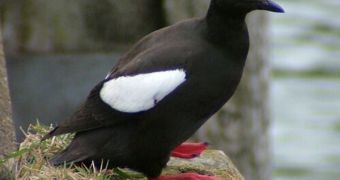Observing animals in their natural habitats, without a direct, human interference, is the best possible way of discovering their habits and population variations, and experts say that the method may also provide a novel, high-tech way of keeping tabs on climate change. If a certain species varies outside its normal limits, it may be an indicator that an external factor from outside the regular ecosystem – such as global warming – is acting on the animals, the BBC News reports.
For example, on Skomer Island, computers and sensor arrays are already being used to monitor a vulnerable habitat, inhabited by guillemots, several species of seabirds that can be found in the order Charadriiformes, and in the auk family. The grid is used to monitor interesting behavior in the species, such as how much time they spend in the colony or mating, or their eating habits and timetables. The investigators operating the instruments also hope to be able to collect key features in the species, as well as developing trends, and their spread.
Through their very nature, guillemots are early indicators of environmental changes and can be used to predict what effects climate change could have on other endangered ecosystems as well. University of Lincoln computer science lecturer Dr. Patrick Dickinson, one of the scientists involved in creating the autonomous, bird-watching system, says that the project presents a number of difficult challenges, but that the team is prepared to take them on. Skomer Island is located off the coast of Pembrokeshire.
“There has been quite a lot of work done on surveillance but applied to monitoring in urban settings. The countryside reveals different technological problems from a modeling point of view,” the expert explains. In the city, a CCTV system is tightly fixed to a building or pole, and the only moving targets it surveys are humans and animals. In the wild, cameras need to be set on trees, which move with the wind. Additionally, the entire landscape moves, which means that observations are made much more difficult, the scientist shares.
“Computer monitoring has a huge potential in terms of streamlining data collection. Not just counting birds but providing other kinds of biological information too. They could provide us with an early warning system,” Sheffield expert on behavior and evolution, Professor Tim Birkhead says. “Monitoring these populations is vital in terms of keeping abreast of the health of the marine environment,” he concludes.

 14 DAY TRIAL //
14 DAY TRIAL //